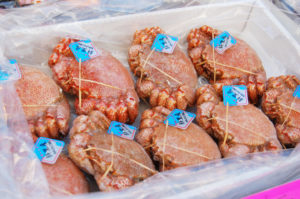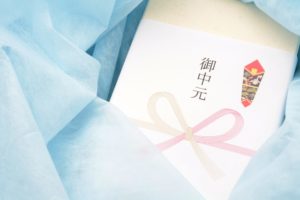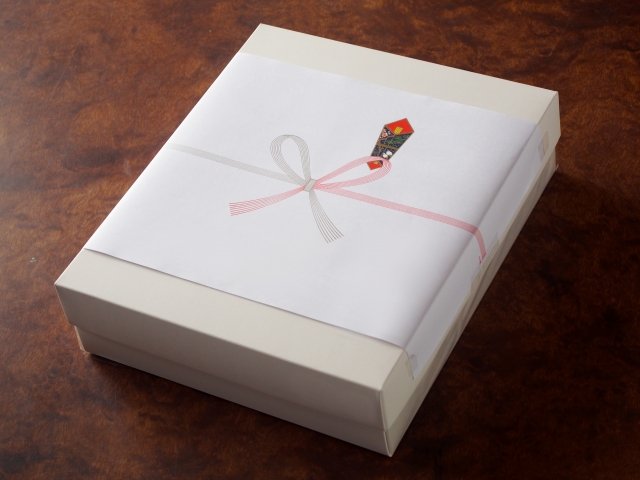Oseibo: Japanese Year-End Gift Giving Culture
Japan is known to have a unique gift-giving culture, as represented in omiyage. Giving gifts in Japan is considered to be a way to show the giver's care for the receivers, to express gratitude, and to maintain relationships.
Oseibo is one part of the Japanese gift-giving culture that takes place in the year-end. Let's get into the detail of this culture today!
Meaning and Origin of Oseibo
The word “Seibo”(歳暮) means “the end of the year.” “O” is an adding letter to make the word formal or to sound gentle. Oseibo is one of the two gift-giving seasons along with Ochugen. Oseibo takes place at the end of the year, and gifts are given express your gratitude to those whom you feel grateful to.
Oseibo was originally an offering dedicated to the ancestors at the year-end. The typical choices for oseibo at that time included fish, mochi, dried squid and other items that could go along with alcoholic beverages. In the Edo period (early 17th~mid 19th century) the custom of oseibo became widespread across the country and gradually became a commercial practice.
Marchants brought gifts to business partners such as landlords, clients, and vendors. But in recent years, oseibo has been presented not only business partners but also close friends and relatives. Also, people used to visit the receiver’s place to present the gift, but now it is common to order gifts in department stores and have them delivered.
It is widely known that Japanese gifts are wrapped neatly, so is oseibo. But, unlike ordinary gifts, oseibo has another layer of wrapping paper called “noshi” or “noshigami,” with the word “お歳暮” on the upper half and the presenter’s name on the bottom half. Noshigami is often used for gifts to make them formal and presentable.
When is the Oseibo date?
Oseibo season used to be sent in the mid to late-December, but now it is getting common to be sent in the late November. In either case, the gift should be delivered by December 20 because later on, people get extremely busy preparing for the New Year. Despite the timing, oseibo is not considered as Christmas presents.
To whom Oseibo is Presented?
The common oseibo-people list includes the following:
-Business associates
-Doctors/physicians in charge
-Relatives
-Teachers
It is not common to present oseibo to parents/grandparents and friends. Instead, gifts are given on other occasions such as birthday, mother’s day, father’s day, and so on.
What kind of gifts should be presented?

There are no specific rules for what to be chosen as oseibo. It is favorable to choose something that fits the receiver’s taste, but any consumable items will do: beer, wine, juice, snacks, sweets, canned food, frozen food, fruits, seafood, soap, detergent, and so on. The average price for oseibo is 3000~5000 yen ($25~45), and gifts to those who have higher status than you such as your boss are generally expensive.
The followings are the tips for choosing oseibo and the list of common choices of items.
Age
Age of the receiver is the top priority to consider. Younger people may are likely to prefer trendy sweets or wine, and older people may prefer tea, soba, or udon.
Lifestyle
It is important to consider the lifestyle of recipients. Those who live by him/herself may need pre-cooked food such as packed curry or canned food. Those who like cooking may appreciate a set of seasonings, fish, or meat.
Types of family
Items that can be enjoyed by the whole family will be a great choice. For married couples with no kids, it would be better to focus on quality rather than quantity, such as sweets from prestigious shops. On the contrary, a large quantity should be preferred for families with kids. Sausages or ham will be a good choice for that type of family. For three generation families (grandparents, parents, children living together), food that can be enjoyed by any generations such as salmon flakes or nori seaweed will be great.
Regionally specialized items
Japanese people love trying items that are specific to some regions and cannot be found in their living area. So, if someone sends oseibo to those who live far away, it is common to choose locally specialized products; for example, udon from Kagawa, rice from Niigata, or seafood from Hokkaido.
Business associates
To business associates including clients and vendors, a box of individually packaged snacks or sweets will be a great choice so that it can go around the whole office. Tea and coffee are also a good choice for business associates.
What NOT to choose for oseibo
Gifts that do not last long or cannot be consumable should be avoided. In addition to that, the followings are not considered good as oseibo because each item may be associated with negative image towards receivers.
-Money: “You are in financial difficulties.”
-Underwear: “You are too poor to buy underwear.”
-Knives: Cutting the relationship
-Shoes: Trample the receiver down
-Stationery: “Study more.”
Where to buy oseibo
Department stores are the common option to buy oseibo because they have a wide range of gifts that suit any types of people’s taste, and items sold in department stores are generally high quality. Most customers have stores deliver gifts to receivers.
It has been getting common to buy oseibo online and send them to recipients. Online stores have a large selection of items including gifts that are not sold at department stores.
Manners for oseibo

-Make sure that gifts arrive during “Oseibo period”
Oseibo should be arrived to recipients during oseibo period (mid to late-December), at latest by 20th of December. If not possible, send the gift either in the year beginning as “Onenga” or by the beginning of February as “Kanchu-mimai.”
-Wrap with “Noshigami”
Make sure to wrap the gift with a piece of paper called “Noshigami”, with the word “お歳暮”(Oseibo) on the upper half and the name of the receiver on the bottom half.
-Send message cards before oseibo is delivered
Oseibo is ideally presented directly from the giver to the receiver, but it is not possible to every case. If oseibo should be delivered, it is polite to send message cards to notify receivers that oseibo will be delivered. Cards should be sent before the gifts arrive.
Although the custom of oseibo has been fading especially among younger generations, the oseibo custom is still a way of expressing gratitude and maintaining relationships. Learning about the Japanese gift-giving culture will help you get a glimpse of the essence of Japanese mindsets towards personal relationships.
